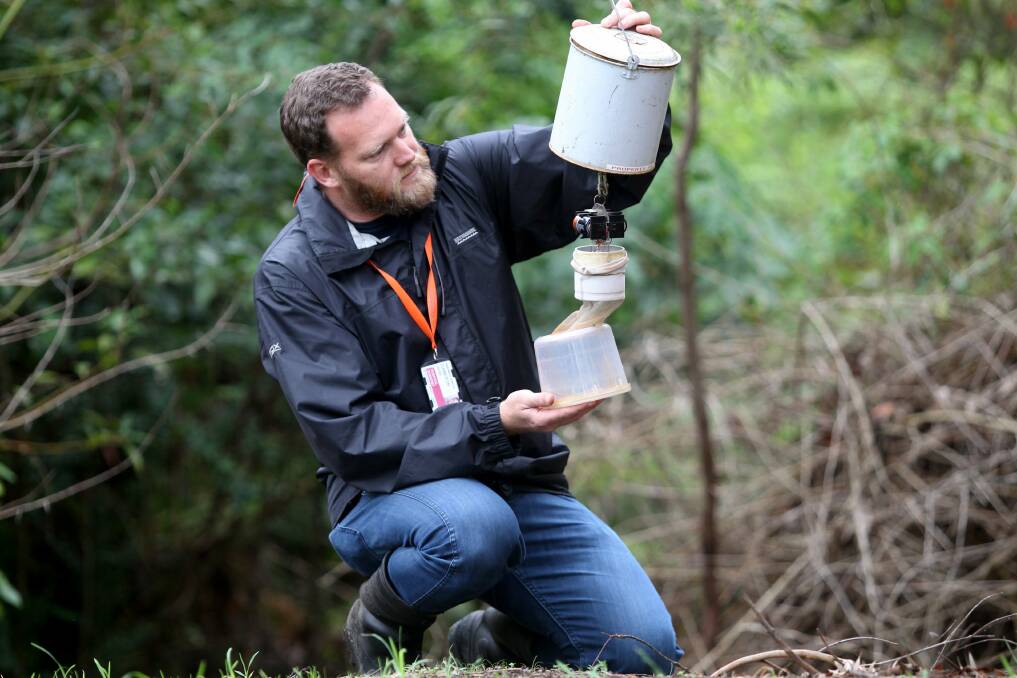SALTMARSH mosquito activity in St George and Sutherland Shire is expected to peak in coming weeks following recent king tides.
Create a free account to read this article
$0/
(min cost $0)
or signup to continue reading
Estuarine wetlands along the Georges River are close to overflowing, creating ideal breeding conditions for the species, Westmead Hospital scientist Cameron Webb said.

Dr Webb helps run the NSW Arbovirus Surveillance and Vector Monitoring Program for NSW Health.
The program collects data from mosquito traps in 30 locations, including Alfords Point, Illawong and Lugarno, to provide early warning of the presence of mosquito-borne illnesses.
Dr Webb said mosquito populations in St George and the shire remained relatively low in recent years; however, a jump in mosquito activity was expected following the exceptional high tides during the first week of January.
He said mosquito activity and the risk of mosquito-borne disease was greatest between January and April.
"Compared with other locations in Sydney, mosquito populations along the Georges River can be more abundant than most areas," he said.
"This is because of the presence of saltmarsh and mangrove environments that can produce exceptional mosquito populations if conditions are suitable.
"Trap sites are selected in locations that provide the best measure of mosquito activity and likelihood of detecting Ross River virus if it is present.
"These sites have been operating for the last few years and provide an opportunity to compare the changes in mosquito activity over time with changes in environmental conditions."
South Eastern Sydney Local Health District warned residents last January that mosquito trapping around the Georges River had shown high numbers of saltmarsh mosquitoes.
But Public Health Unit figures showed fewer than 18 cases of Ross River virus were detected in the area in 2013 and none were acquired in the area.
Spiders, insects, fish, frogs, reptiles birds and bats feed on mosquitoes. Dr Webb said some mosquito species could also help pollinate native plants.
DID YOU KNOW?
There are more than 30 different mosquito species in St George and Sutherland Shire.
Only female mosquitoes bite. They need the blood meal to help grow their eggs.
Some mosquitoes can travel up to 10 kilometres from wetlands.
Mystery surrounds bites that still pack a big sting
THE warning that mosquito activity is set to increase in suburbs around the Georges River is cold comfort to Connie Maugeri, of Bexley.
Ms Maugeri is still looking for answers as to what bit her in November.
Ms Maugeri still has bites, which are itchy and become infected when scratched.
‘‘When you put cream on the bite it goes away and then it comes back again,’’ she said.
Medical tests have been unable to identify the cause of the bites and/or reaction.
Proteins in mosquito saliva can cause immune reactions, including allergic reactions such as immediate and delayed swelling.
To avoid being bitten by mosquitoes, NSW Health recommends that you:
Avoid being outside and unprotected at dawn and dusk when mosquitoes are most common.
Eradicate mosquito breeding sites, such as empty containers that hold water, from around the home.
Use flyscreens on windows and doors and keep them in good condition.
Sleep under mosquito nets when camping; this applies to children in prams.
Have you seen an increase in mosquito activity?



